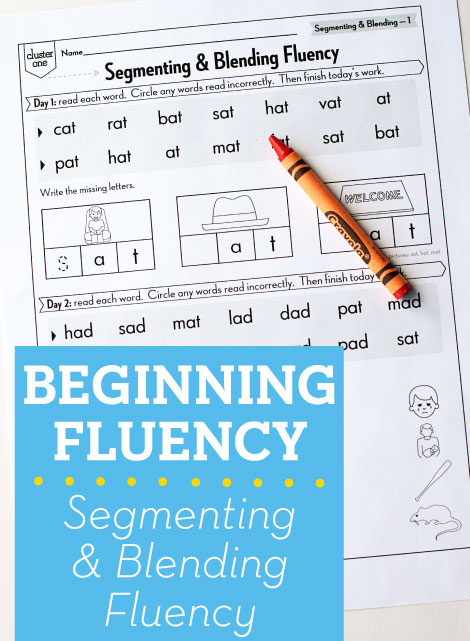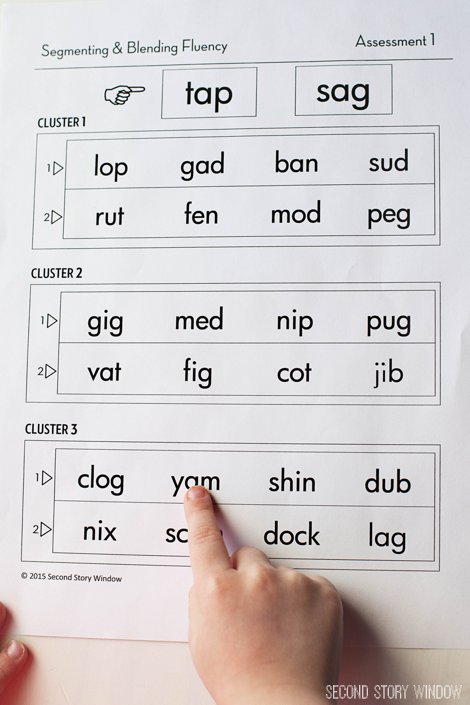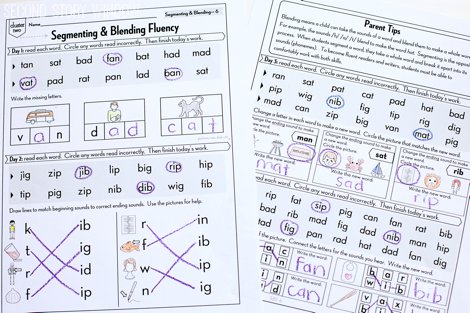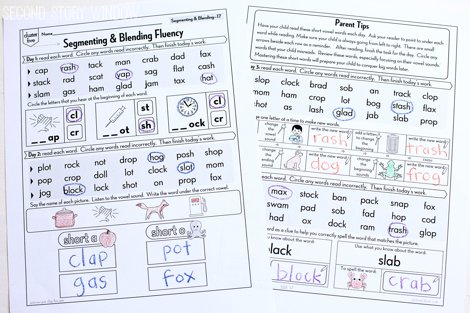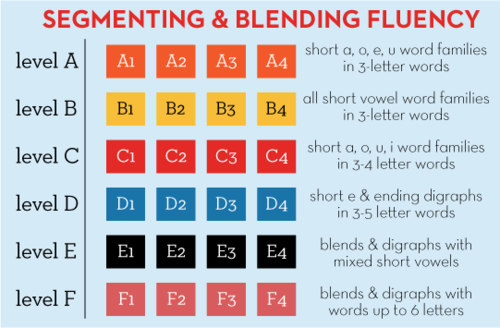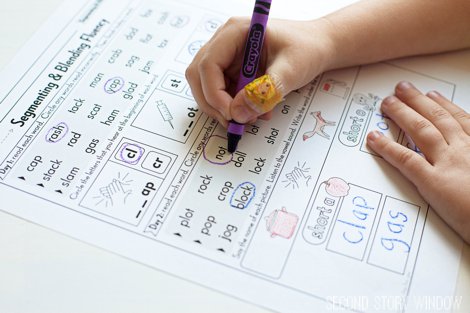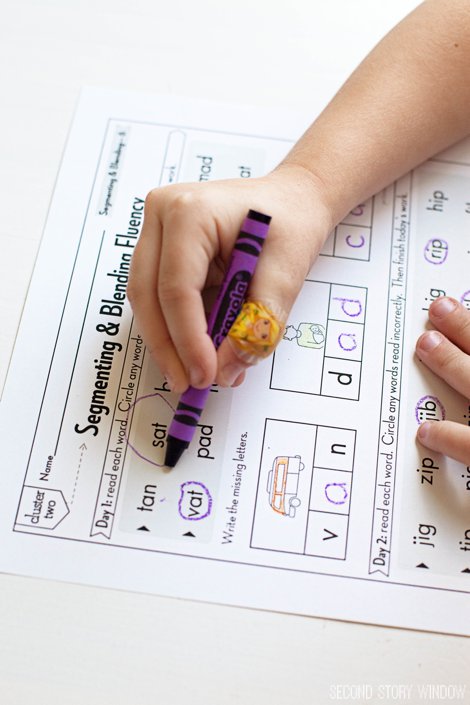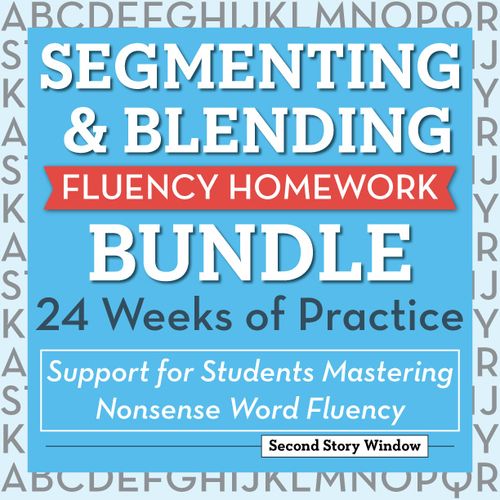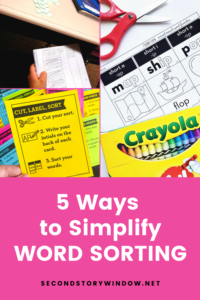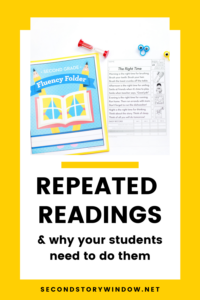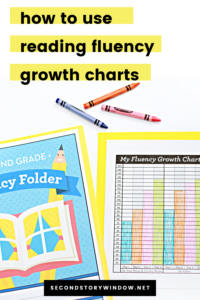I remember when they handed me my list of kids who hadn’t passed their DIBELS Nonsense Word Fluency. It seemed like it must be a cruel joke! Nonsense words? Really?????
Over time I’ve come to love and hate Nonsense Word Fluency. I love it because that first year with DIBELS at my school I had a couple learners who just weren’t progressing in reading. I was trying everything I knew to do, but there wasn’t much growth. Turns out, these were the same kids who didn’t pass NWF. That gave me some insight that I hadn’t picked up with running records.
But I hate NWF because it’s such a pain! I felt like it was monitor, monitor, monitor, but I wasn’t given any resources for helping fix the problem. Poking around Pinterest I found a few things, but they were mostly lists (long lists!) of nonsense words for kids to drill.
“Here, struggling reader, read this list of 60 gibberish words every night for a week.” This just didn’t work for me for a few reasons.
First, reading a list is not addressing the real issue–poor phonological skills.
Second, If students are practicing with nonsense words, it reduces the reliability of the assessment; they may be working with words from the test. I’ve seen those centers where students are sorting words into real and nonsense (or silly or pretend) categories and I thought about using one, but I decided against it.
If my students practiced nonsense words and they passed the assessment, I wouldn’t be able to say for certain it’s because the children can blend sounds or because they’ve seen the “word” before. And as much as I’d love to be done progress monitoring NWF, I figured it would probably be better to make sure they actually knew how to segment and blend sounds. 😀
The last reason I don’t like giving students nonsense word practice is really just a pet peeve: we spend so much time trying to get students to understand that reading should make sense, but then we give them a list of unintelligible words to race through! For an assessment a few times a year I can look past it, but it seemed counter intuitive to give my struggling readers nonsense words every day.
Out of all this head banging and tooth gnashing came Segmenting and Blending Fluency homework.
I wanted something that would help students learn the skill instead of just learning words. So we have 24 weeks of scaffolded homework to help those kids master the skills of segmenting and blending 1-syllable short vowel words.
Like our other beginning fluency packs (Letter Name and Letter Sound) this starts with an assessment. If you have DIBELS, you could totally just use your NWF data. If you want a targeted look at where your students are, this assessment is designed to do that.
This is a pretty quick test. Sit with a student one-on-one. Have him/her read you the 8 words on level A. These are all CVC words with a short a, e, o, or u vowel sound. If you’re feeling very thorough, you can underline individual letter sounds said correctly or whole words read like you do with DIBELS, but it’s not necessary. If the student correctly reads 6 or more out of the 8 words, ask him/her to read Level B. Each level is more challenging than the previous one. Continue until you find the first level where the student makes 3 or more mistakes.
There are 4 weeks of homework at each level (24 weeks total).
Each day, students read a short list of words organized around a single-syllable short vowel sound or sounds. By making the words predictable, readers can work on developing automaticity instead of having to sound out each word. After reading the words students complete a targeted activity designed to help strengthen those word chunking skills. The lists gradually progress in difficulty. The first pages have students reading cat, bat, and rat. By the last group, they’re ready for shrill, cloth, and primp.
If you have a student who can read all the words correctly, but isn’t passing NWF because of a slow speed, assign him/her an early level and work on the skills needed to increase speed (not pointing to each letter, recording and playing the reading back, practicing with real sentences and timing the student for a minute and doing timed rereadings, etc.).
You can pick up the Segmenting and Blending Fluency bundle in our Teachers Pay Teachers store.
If you want to sample some pages we have put together a free sampler of Segmenting & Blending fluency homework. You can get a free sample week of each level included in the bundle (6 weeks total).
—–
Whether or not you use our fluency resources, we hope that this post has provided you with some insight on why fluency is important and how to tackle it with your students.

